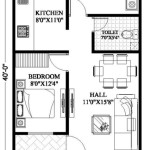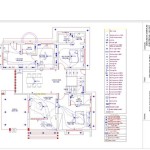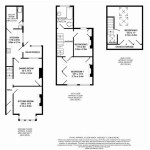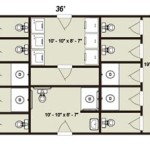Geothermal Home Plans: Harnessing Earth's Energy for Sustainable Living
Geothermal energy offers a compelling alternative to conventional heating and cooling systems. Tapping into the earth's consistent temperature below the surface provides a renewable and efficient energy source, significantly reducing a home's environmental footprint and long-term operating costs. Integrating geothermal technology requires careful planning and consideration during the design phase of a home. This article explores key aspects of geothermal home plans, providing a comprehensive overview of the process.
The core principle of geothermal heating and cooling relies on the relatively constant temperature found a few feet below the earth's surface. This temperature, typically between 50 and 60 degrees Fahrenheit, remains stable regardless of the outside air temperature. Geothermal systems utilize a network of pipes, known as a ground loop, buried underground. These pipes circulate a fluid, usually water or a water-antifreeze solution, which absorbs heat from the earth in winter and releases heat into the earth in summer.
Several types of ground loop systems exist, each with specific advantages and disadvantages depending on the site's geological characteristics and available land area. Horizontal loops are the most common, requiring a relatively large area of land for installation. Vertical loops, installed in deep boreholes, are suitable for properties with limited surface area. Pond/lake loops utilize the consistent temperature of a body of water for heat exchange. Open-loop systems, using well water, offer a simpler installation but require specific geological conditions and regulatory approvals.
Integrating geothermal systems effectively necessitates careful planning during the design phase of a home. Considerations include the size and layout of the ground loop, the location of the geothermal heat pump, and the distribution system within the house. Collaboration between architects, HVAC engineers, and geothermal installers is crucial for optimal system design and integration.
The design process typically begins with a thorough site assessment to determine the soil type, groundwater conditions, and available land area. This information informs the selection of the appropriate ground loop system and its configuration. Heat load calculations, considering the home's insulation levels, window efficiency, and climate zone, determine the capacity of the geothermal heat pump required.
The location of the geothermal heat pump within the house is another crucial design element. The heat pump requires adequate space for installation and maintenance, along with proper ventilation for optimal performance. Integrating the heat pump with the home's ductwork or radiant floor heating system ensures efficient heat distribution throughout the house.
Geothermal home plans should also address the integration of other energy-efficient features. High-performance insulation, airtight construction, and energy-efficient windows complement the geothermal system, further reducing energy consumption and maximizing cost savings. Incorporating passive solar design principles, such as south-facing windows and thermal mass, can further enhance the home's energy efficiency.
The benefits of geothermal home plans extend beyond energy savings. Geothermal systems operate quietly, eliminating the noise associated with traditional HVAC units. They also improve indoor air quality by reducing the circulation of dust, pollen, and other allergens. Furthermore, the absence of outdoor units enhances the home's aesthetic appeal and eliminates the risk of vandalism or damage.
While the initial investment for geothermal systems can be higher than conventional HVAC systems, the long-term cost savings and environmental benefits make it a compelling choice. Geothermal systems have a significantly longer lifespan than conventional systems, requiring minimal maintenance. Furthermore, various financial incentives, including tax credits and rebates, are available to offset the initial installation costs, making geothermal an increasingly attractive option for homeowners.
Choosing a qualified and experienced geothermal installer is paramount for the successful implementation of a geothermal system. Proper installation ensures optimal system performance, longevity, and efficiency. Homeowners should research potential installers thoroughly, checking their credentials, experience, and customer reviews.
Geothermal home plans represent a significant step towards sustainable living. By harnessing the earth's natural energy, these homes offer a comfortable, efficient, and environmentally responsible alternative to traditional heating and cooling systems. Careful planning and collaboration between design professionals and installers ensure the successful integration of geothermal technology, paving the way for a greener future.

Site Plans For Geothermal Heating And Cooling Ground Digging Permits 24h Building Plan Drawing Drafting Service

Heatspring 4 Step Guide To Designing Geothermal Systems

Geothermal Heatpumps

Sizing Geothermal System

Geothermal Designs Buschurs Refrigeration

Infloor Heating Systems Powered By Geothermal Energy

Guest Blogger Talks About Passive Geothermal Heating And Cooling

Roi Can Geothermal Boost A Home S Value Ontario Builders

Geothermal Heating And Cooling Cost 2024 Pros Cons Comparisons

New Financing Options Help Make Geothermal Affordable Builder Ppas








